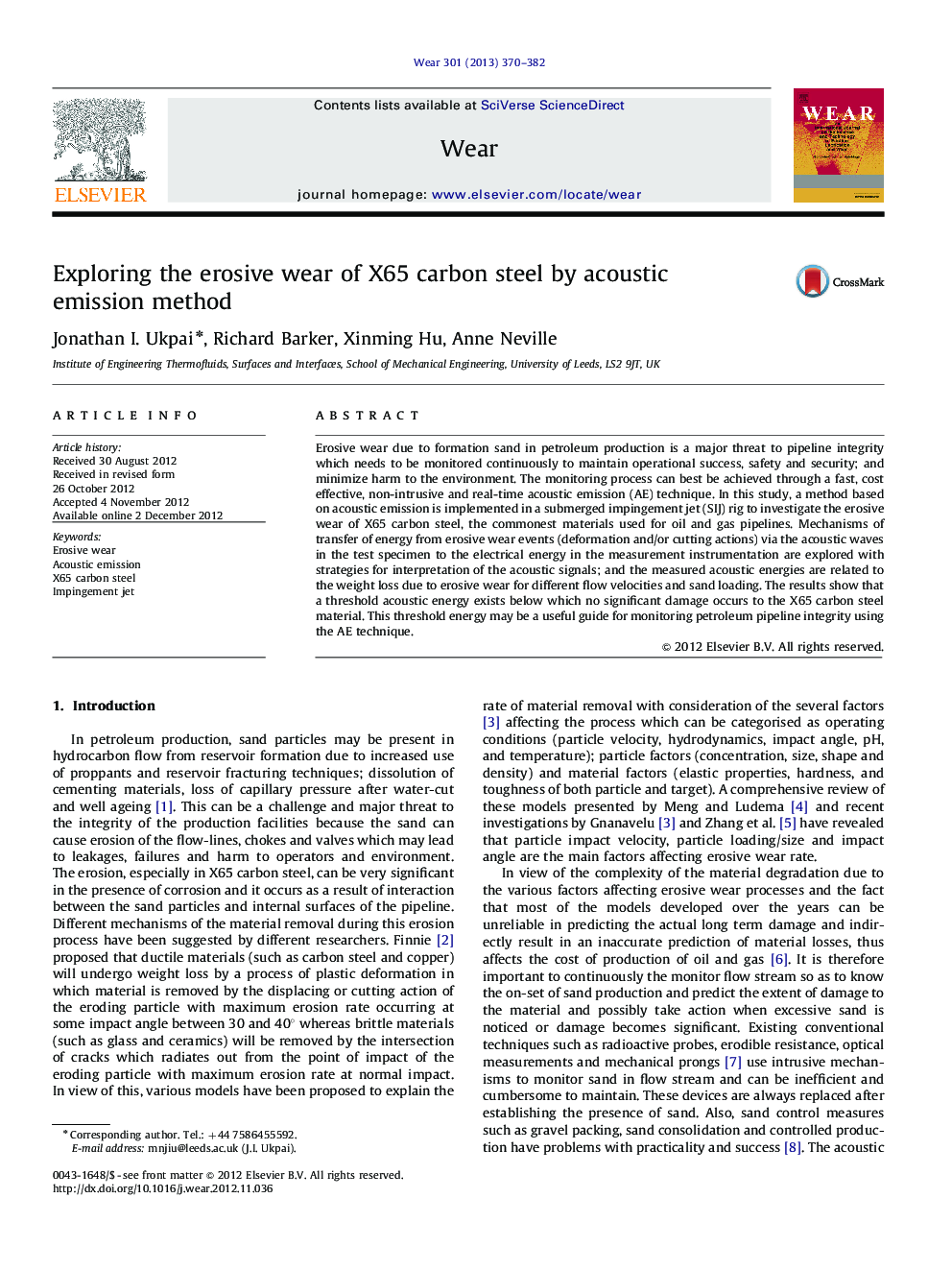| Article ID | Journal | Published Year | Pages | File Type |
|---|---|---|---|---|
| 617544 | Wear | 2013 | 13 Pages |
Erosive wear due to formation sand in petroleum production is a major threat to pipeline integrity which needs to be monitored continuously to maintain operational success, safety and security; and minimize harm to the environment. The monitoring process can best be achieved through a fast, cost effective, non-intrusive and real-time acoustic emission (AE) technique. In this study, a method based on acoustic emission is implemented in a submerged impingement jet (SIJ) rig to investigate the erosive wear of X65 carbon steel, the commonest materials used for oil and gas pipelines. Mechanisms of transfer of energy from erosive wear events (deformation and/or cutting actions) via the acoustic waves in the test specimen to the electrical energy in the measurement instrumentation are explored with strategies for interpretation of the acoustic signals; and the measured acoustic energies are related to the weight loss due to erosive wear for different flow velocities and sand loading. The results show that a threshold acoustic energy exists below which no significant damage occurs to the X65 carbon steel material. This threshold energy may be a useful guide for monitoring petroleum pipeline integrity using the AE technique.
